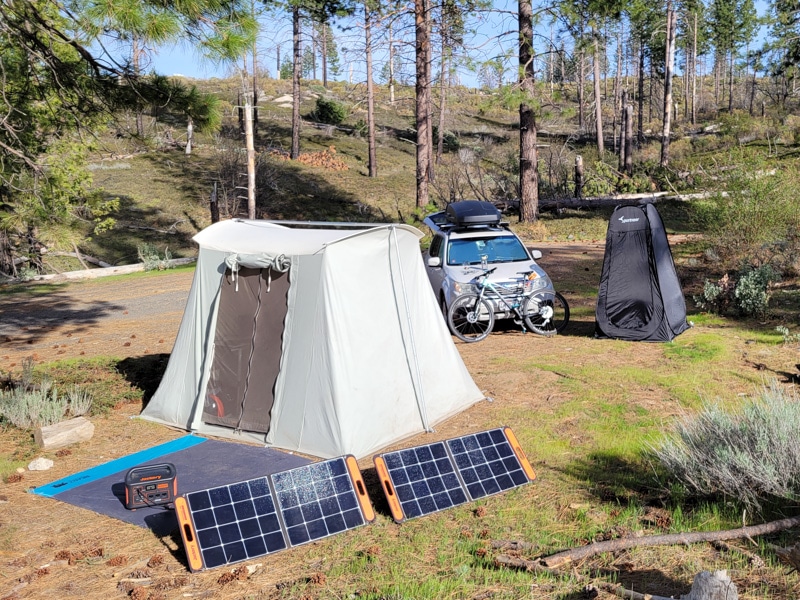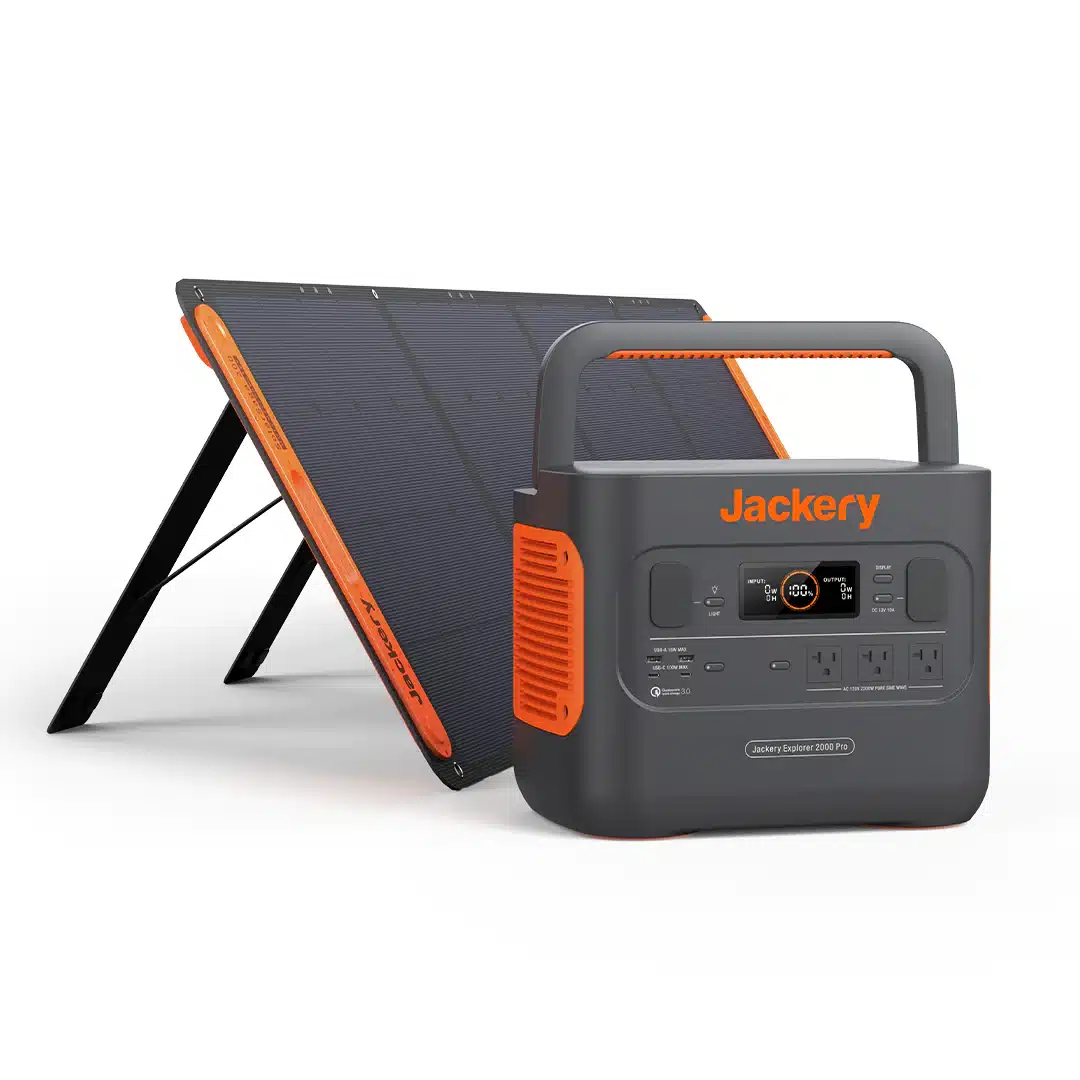After using my Jackery for three years, I began exploring alternatives to Jackery for a larger power station.
In my research, I had to decide whether Jackery or its alternatives offered the best options in the current market.
While I appreciate the quality & durability of Jackery, I recognize that by 2023, many compelling Jackery alternatives have emerged that might better suit different needs.
The Best Jackery Alternatives
The 3 primary brands that are Jackery alternatives are:
- EcoFlow
- Bluetti
- Anker
All three of these brands have similar options to Jackery with the same or better warranties. In addition, they all have better options for LiFePO4 (LFP) power stations.
In my opinion, the best Jackery alternative is EcoFlow. EcoFlow power stations offer LiFePO4 power stations at all the popular sizes (250, 500, 750, 1000, and 2000Wh).
Use my power station spreadsheet to compare the options.

While Jackery is a very popular brand, the competition has ramped up. In past years, the cheaper alternatives had a high chance of being faulty or unregulated. However, in in 2023, legit companies compete with Jackery, like Anker, EcoFlow, and Bluetti.
EcoFlow vs Jackery: Alternative Choices
EcoFlow is a reputable brand, and its DELTA technology allows for a fast charging time. The Ecoflow DELTA 2000 Max can go from 0 to 80% charge in 65 minutes or 0 to 100% in under 2 hours.
This alternative did not exist when I was making my decision. If it did, it easily wins in the 1300W+ category due to battery technology (LiFePO4, more on further down).
[Read the Best LiFePO4 Power Stations for Every Application]
Jackery and Ecofolow are more similar in the (300W-600W) range when the battery technology is the same. The River Series is Ecoflow’s smaller-capacity power station, and they also have those with LiFePO4 technology (make sure to check, some don’t!).
You can typically get it cheaper directly from Ecoflow vs Amazon.
Features Comparison
- 2016Wh battery capacity
- Super-fast charging mode (1,800W input)
- Remote control and monitoring via an App
- Can power high-wattage devices like AC units, space heaters
- Expandable capacity
Besides the obvious battery capacity, the App support is the best reason for moving up from the 1,300w DELTA model. This feature is not available in Jackery.
The screen display will have similar information as other high-end power stations.
The App is nice because you don’t have to be in front of the power station constantly to check on things (especially nice if you’re using solar and monitoring it).
Comparing Jackery Alternatives: What About Solar?
If you primarily use solar to charge your power station, Jackery can accept the most input at one-time.
However, keep in mind, many power stations will void their warranty if you use third-party solar panels with their power stations, so commit to one brand if that’s important to you.
Otherwise, from what I can tell, Jackery is more expensive than EcoFlow and isn’t better in any meaningful way. Jackery also has a non-pro version for cheaper, but it won’t have fast charging to compete.
The Jackery 2000 is a great size for Starlink. They even make a 3000. Adding solar panels can make this a semi-permanent solution for connectivity.
Similarities
- ~2,000wh capacity
- Fast AC charging (~2 hours for both)
- Lots of ports for various device charging
Differences Between Jackery and Competitors
- Jackery peak surge power is 4400w vs Ecoflow 3400w, this isn’t relevant for powering many things, it’s more relevant for startup surge power for an A/C unit or some other power juggernaut
- Jackery is typically 10 to 25% more expensive
- Power stations have fans to cool themselves, the Jackery fans tend to be quieter than EcoFlow
In addition, the Jackery 2000 Pro is relatively new to the market, so there’s less information about its longevity.
Battery Type: LFP (LiFePO4) vs NMC
EcoFlow uses better battery technology in its Delta Pro (EcoFlow uses LFP rather than NMC in some of its power stations). The battery life should last much longer than a Jackery.
Read why LFP vs NMC is an important factor for choosing the right power station..
Jackery’s batteries are measured by how many cycles it goes to get to 80% battery capacity from degradation. It takes roughly 500 charges and will continue decreasing after that (as of May 2023, looks like they upped it to 1000 charges).
EcoFlow should be able to get 3000 recharge cycles before it reaches 80% of the battery capacity degradation (EcoFlow states 6500 to 50%).
The downside of LFP is they will weigh more due to the components of the battery (ie: Ecoflow will be heavier than Jackery). Most of the time, it’s not an issue since you’re not carrying these far distances.
Warranty: How it Impacts Your Decision
Ecoflow also has a better warranty which is important since these power stations are expensive.
To keep the warranties valid, you typically must use that brand’s solar panels and other related gear/cables.
The EcoFlow warranty is 24 months + 12 months for a total of 36 months. You simply register your product online.
Jackery’s warranty is for 24 months with no extension.
Similar Products to Jackery: Anker Power Stations
Anker is beefing up their power station product line and competes well with Jackery. Many people already own Anker devices, and they are a reliable company.
View all Anker power stations here.
They also use LFP technology in many of their power stations making them better than Jackery, but comparable to EcoFlow.
Final Thoughts
Jackery has a large following and was better than most of the competition years ago. However, in my opinion, the Jackery alternatives are becoming better and better each year.
It’s easy to get lost in the details of power stations. I would recommend getting a power station with LFP technology and about 1 size up vs what you think you need.
I bought the Jackery 1000 and ended up getting solar panels a year later (I should have gotten the 1500 or even 2000). You’ll find more and more ways to use power stations as you get used to having one.


